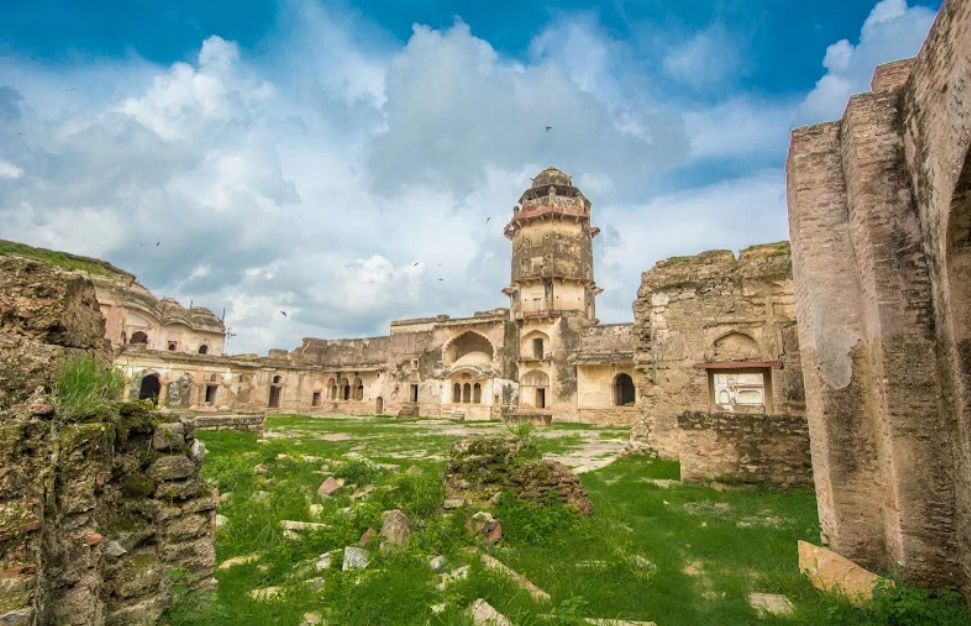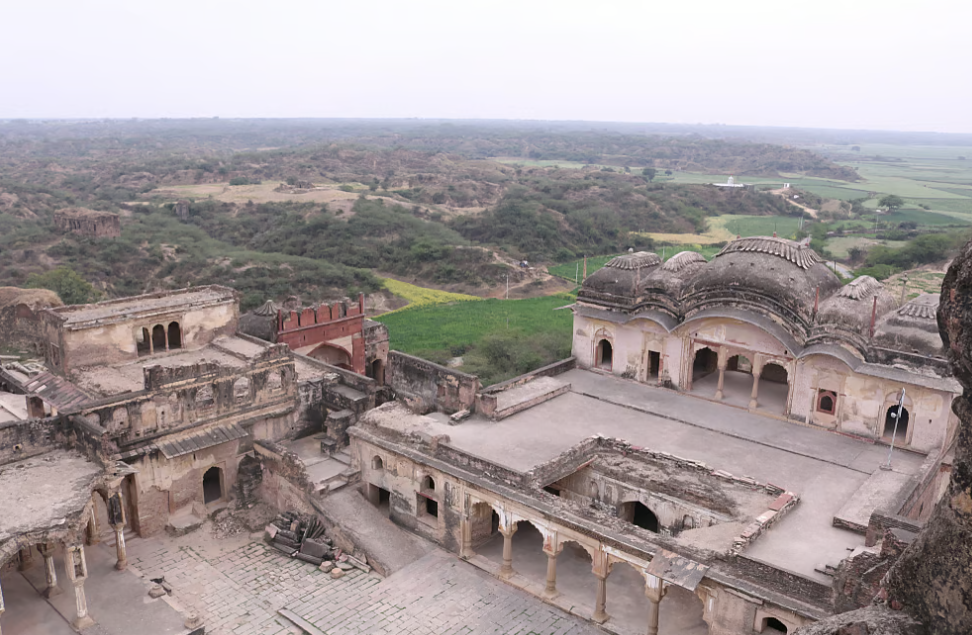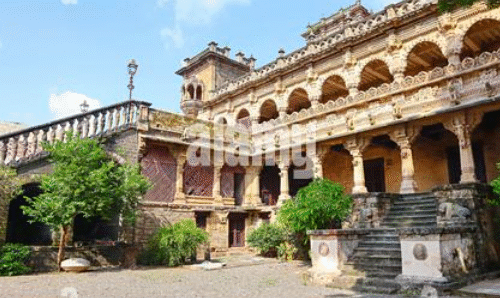Ater Fort is a historic and majestic fort in the Bhind district of Madhya Pradesh, India. Located near the Chambal River, the fort stands tall as a symbol of bravery, architectural brilliance, and rich culture. It attracts history lovers, explorers, and photographers. This ancient structure speaks through its walls, gates, and towers, telling stories of power, war, and pride. If you love history, nature, and peaceful places, Ater Fort is the perfect destination for you.
History of Ater Fort
The story of Ater Fort began in the 17th century. Bhadauria ruler Badan Singh started building the fort in 1644. Later, his successor Mahasingh completed the work in 1668. The fort was originally called Devagiri. It was built to guard the Chambal River and the nearby ravines. These natural landscapes were dangerous, and the fort helped keep watch on any enemy movements.
The Bhadauria rulers used Ater Fort as a stronghold to protect their kingdom. Over the years, the fort saw many battles and rulers. It passed through the hands of local kings and later came under the influence of the Marathas and then the British. These changes in power added more historical value and diversity to the fort. Despite wars and time, Ater Fort still stands strong, reminding us of its proud past.
Asirgarh Fort: A Historical Gem in Madhya Pradesh
Location of Ater Fort
Ater Fort lies about 35 kilometers west of Bhind city, in the central Indian state of Madhya Pradesh. It sits on the edge of the Chambal ravines, a unique and rugged area known for its deep valleys and wild terrain. This natural setting gave the fort a strong defense. Enemies found it hard to approach the fort because of the steep ravines and rocky paths.

The fort is also close to the Chambal River, which made it a valuable place for trade and transport. From the top of the fort, one can see the vast landscape of the region. This strategic location helped the rulers stay alert and control important routes in the region.
Today, the fort is easily reachable by road. Local buses and taxis run from Bhind and nearby towns. Visitors often enjoy the drive through the countryside and ravines. The scenic journey to Ater adds excitement to the overall experience.
Design and Structure of Ater’s Fort
Ater Fort is a fine example of smart planning and strong construction. It was built using locally available red sandstone and lime mortar. Its design is a blend of Rajput and Mughal styles. The high walls, round bastions, and multiple entry gates were built for security. These features protected the fort from attacks and invasions.
Visitors enter the fort through a series of three strong gates. Each gate leads deeper into the complex. The walls are thick and strong, offering defense from both weapons and natural forces. Inside, the fort is spread out across a large area. There are royal palaces, living quarters, open courtyards, storage rooms, and even secret pathways.
One of the most eye-catching structures is a seven-storied tower. This tower gives a great view of the surrounding land and shows the height of engineering skills at that time. The entire fort has a thoughtful layout that balanced beauty, comfort, and safety.
Architectural Features of Ater Fort
The architecture of Ater Fort is a mix of art and strength. The walls and gates have arches and domes, which are signs of Mughal influence. Some walls have delicate carvings and floral patterns. The palaces and halls inside have wide verandas and open terraces. These spaces allowed air to flow and kept the interiors cool during summer.

Many rooms have arched windows and balconies, offering views of the hills and forests. These balconies also worked as watch points for guards. Stone pillars support large halls inside the fort. These halls were used for meetings, ceremonies, and gatherings.
What makes the fort special is the attention given to both beauty and function. Even the drainage system was built carefully to keep the rooms clean during rains. There are underground rooms too, which were used to store goods and stay safe during battles. Every part of the fort reflects the skills of the builders and the lifestyle of the rulers.
Attractions within Ater Fort
Ater Fort is more than just walls and gates. It has many amazing spots that grab the attention of visitors:
Khooni Darwaza
This gate has a scary past. It is believed that blood once flowed from this gate during wars. Only those who applied this blood to their foreheads could enter and meet the king. This gate adds a mysterious feel to the fort.
Badan Singh Ka Mahal
This was the home of Badan Singh, the fort’s founder. The palace shows the luxury and taste of the time. It has decorated walls, spacious rooms, and high roofs.
Hathiapor
This area was used for elephants. It includes wide gates and strong floors to handle the weight of royal elephants. The structure also served military needs during battles.
Raja Ka Bangla and Rani Ka Bangla
These were the living quarters of the king and queen. Their rooms had large windows, fine carvings, and private courtyards. You can still feel the royal charm in these parts of the fort.
Barah Khamba Mahal
This is a unique building supported by twelve stone pillars. It is used as a resting place and looks beautiful with its open space and strong design.
These attractions make Ater Fort a place full of surprises. Each corner has a story. Visitors often take photos and spend time exploring the beauty and mystery of the site.
Visiting Ater Fort Today
Ater Fort is open for tourists and history lovers. The best time to visit is from October to March, when the weather is cool and perfect for walking. The fort is large, and it takes about 2 to 3 hours to see everything.
The fort has no entry fee, and local guides are sometimes available to explain its history. You should wear comfortable shoes, carry water, and bring a camera to capture the views. Since the fort is located in a natural area, you may also see birds, monkeys, and even deer near the fort.
Nearby attractions include Chambal Wildlife Sanctuary, which is home to gharials, crocodiles, and turtles. So, a trip to Ater Fort can easily turn into a full-day adventure.
For visitors interested in local culture, Bhind city offers traditional food and craft items. After visiting the fort, you can relax at a local dhaba and enjoy the flavors of Madhya Pradesh.
Conclusion
Ater Fort is a hidden gem of Madhya Pradesh. With its rich history, bold architecture, and peaceful surroundings, it tells stories from a time long gone. The fort’s strength, beauty, and design show the power and creativity of the Bhadauria rulers.
Visiting Ater Fort is not just a trip to the past—it is also a way to connect with the land, the people, and the traditions of the region. Whether you are a traveler, a student, or a photographer, Ater Fort gives you something to remember. Its quiet charm and historic value make it a must-see destination.
So, if you are looking for a journey that is full of stories, stone, and soul, Ater Fort is waiting to welcome you. Read More



